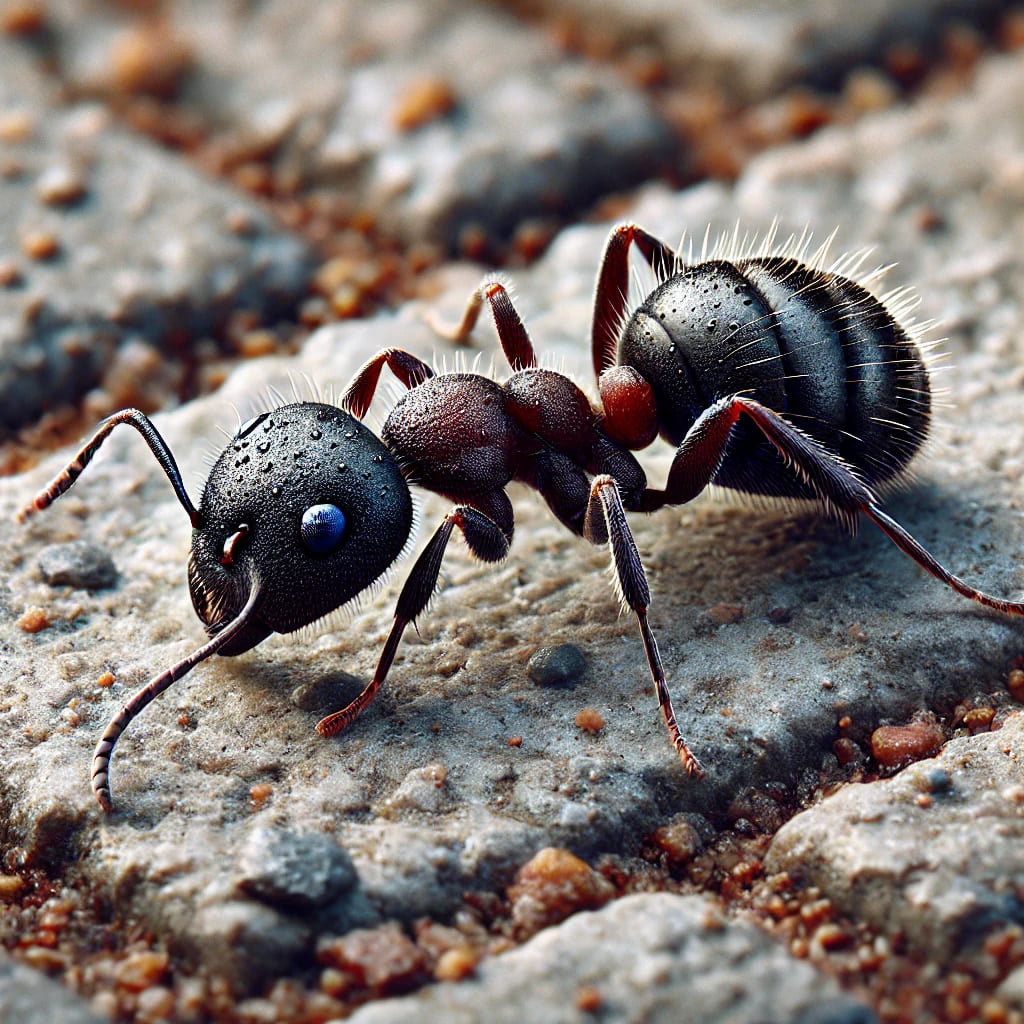
Pavement Ants
Pavement ants (Tetramorium immigrans) are dark brown to black ants, approximately 1/8 inch long. Unlike the odorous house ant, they have two nodes in front of their abdomen, fine grooves on their head and thorax, a cluster of hairs on the end of their abdomen, and two spines on their backs. You can often find them leaving little piles of soil or sand beside driveways, patios, and paving stones, which indicates the location of their nests. When crushed, they emit an acidic smell, unlike the odorous house variety that smells like rotten coconuts.
Distribution
Although not native to the US, pavement ants were likely introduced via ships from Europe in the 1700s and 1800s. They have successfully colonized much of the US, from New England to the Mid-Atlantic, and are common in the Midwest, parts of California, Washington, and even some southern states.
Behavior and Nesting
Pavement ants nest under pavements, sidewalks, driveways, and patios, hence their name. They also set up nests in lawns, gravel pathways, and under floorboards. Their colonies have multiple queens and many workers. At night, you might find them searching for food in your kitchen or near pet food leftovers.
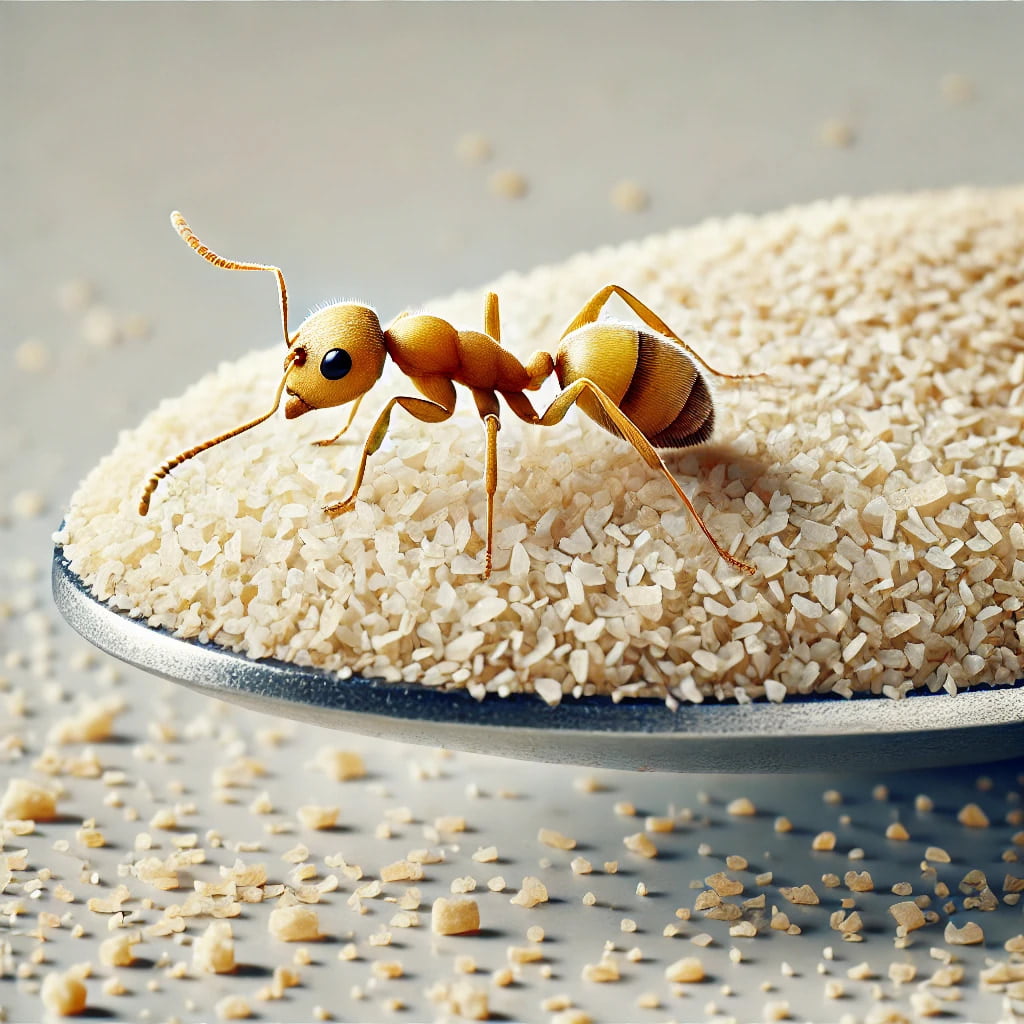
Pharaoh Ants
Pharaoh ants are small, measuring about 2 mm in length. They are yellow or light brown, almost transparent. Their name is possibly derived from the mistaken belief that they were one of the Egyptian (pharaonic) plagues. These ants have a non-functional stinger used to generate pheromones. Their eyesight is poor, and they possess around 32 ommatidia. Queens are dark red and initially have wings that are lost soon after mating.
Distribution
Pharaoh ants are a cryptogenic species, introduced to virtually every area of the world, including Europe, the Americas, Australasia, and Southeast Asia. They thrive indoors, especially in heated buildings, where they find the warmth and moisture necessary for their survival. They are commonly found in hospitals, apartments, and commercial buildings.
Behavior and Nesting
The queen can lay hundreds of eggs in her lifetime. Eggs hatch in 5 to 7 days, and the entire life cycle from egg to sexual maturity takes about 38 to 45 days. Mature colonies contain several queens, winged males, workers, and brood. Pharaoh ants are invasive and can infest various environments. They breed continuously throughout the year in heated buildings. Colonies can fragment into bud colonies quickly, making control difficult. These ants forage for food in wide-ranging areas and are known to contaminate food and spread pathogens.
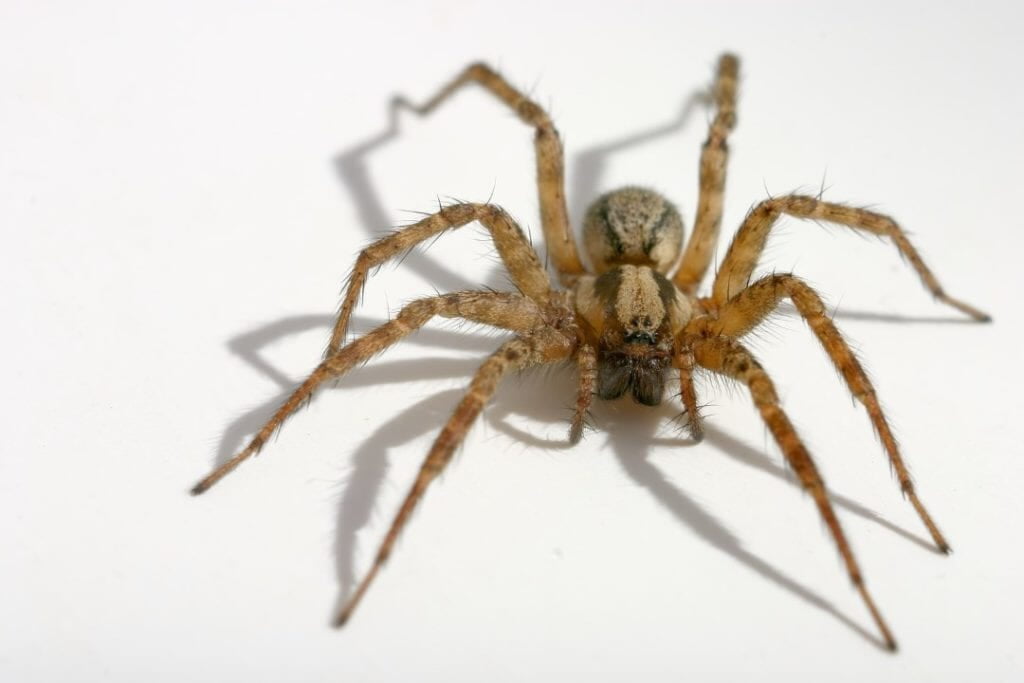
Common House Spider
The common house spider (Parasteatoda tepidariorum) is small, measuring less than a quarter of an inch (0.6 centimeters) long. Females tend to be slightly larger than males. They have a drab coloration, ranging from yellowish gray to brown or black. Males have legs with an orange tint, while female common house spiders’ legs appear yellow.
Distribution
Common house spiders are found throughout the world, thriving in a variety of environments. They are most commonly seen in North America, particularly in the United States and Canada, but are also prevalent in Europe, Asia, and parts of South America. These spiders typically inhabit human dwellings, where they find ample food sources and shelter.
Behavior and Nesting
These spiders make their webs in corners and nooks of homes. They feed on small insects such as flies, mosquitoes, fleas, and ants. Although they have venom, their bite is considered harmless to both people and pets. The webs of common house spiders are irregularly shaped and often located in undisturbed areas, such as basements, attics, and garages. They are not aggressive and usually retreat when disturbed.
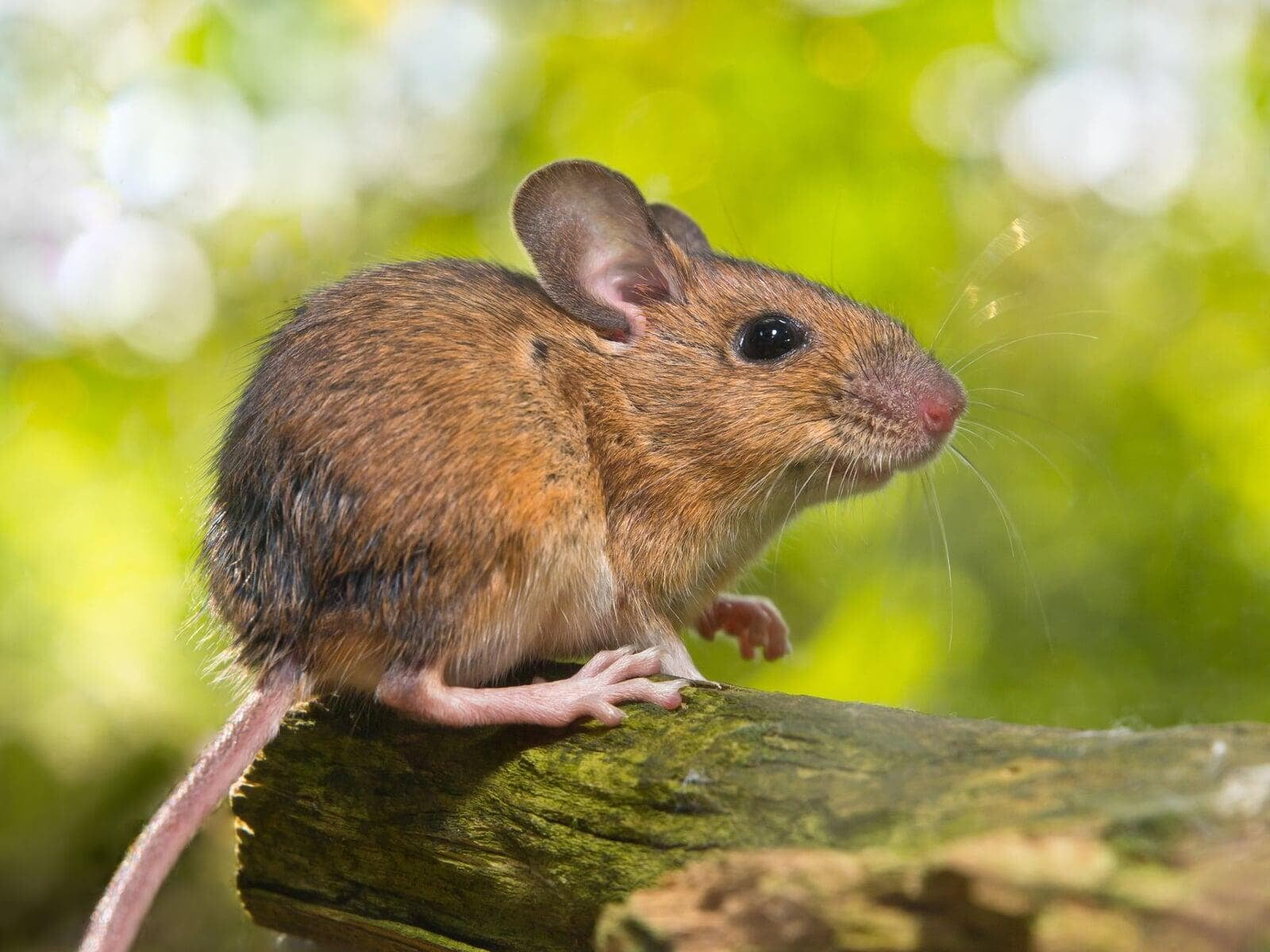
Deer Mouse
Deer mice belong to the genus Peromyscus and consist of 53 species. They are small rodents found in various habitats, ranging from Alaska and northern Canada to western Panama. These mice have bulging eyes, large ears, and weigh between 15 to 110 grams (0.5 to 3.9 ounces). Their body length ranges from 8 to 17 cm (3.1 to 6.7 inches), and their tails can be shorter or longer, depending on the species. The fur color varies, from nearly white in some populations to gray, buff, brown, reddish brown, and blackish.
Distribution
Deer mice are widely distributed across North America, from the Arctic regions of Alaska and northern Canada to the temperate and subtropical regions of the United States and Central America. They are highly adaptable and thrive in a variety of environments, including forests, grasslands, deserts, and human habitations. Their extensive range and adaptability make them one of the most common rodent species in North America.
Behavior and Nesting
Deer mice are nocturnal but occasionally active in the early evening. They construct nests of plant material in burrows or trees. Agile climbers, they feed on a diverse diet, including plant products, fungi, invertebrates, and carrion. One well-known species is the white-footed mouse (Peromyscus maniculatus), which has an extensive geographic distribution across North America. It breeds readily in laboratory settings and is used for various scientific studies. Interestingly, it is the primary host of hantavirus and one of the hosts of plague in the United States.
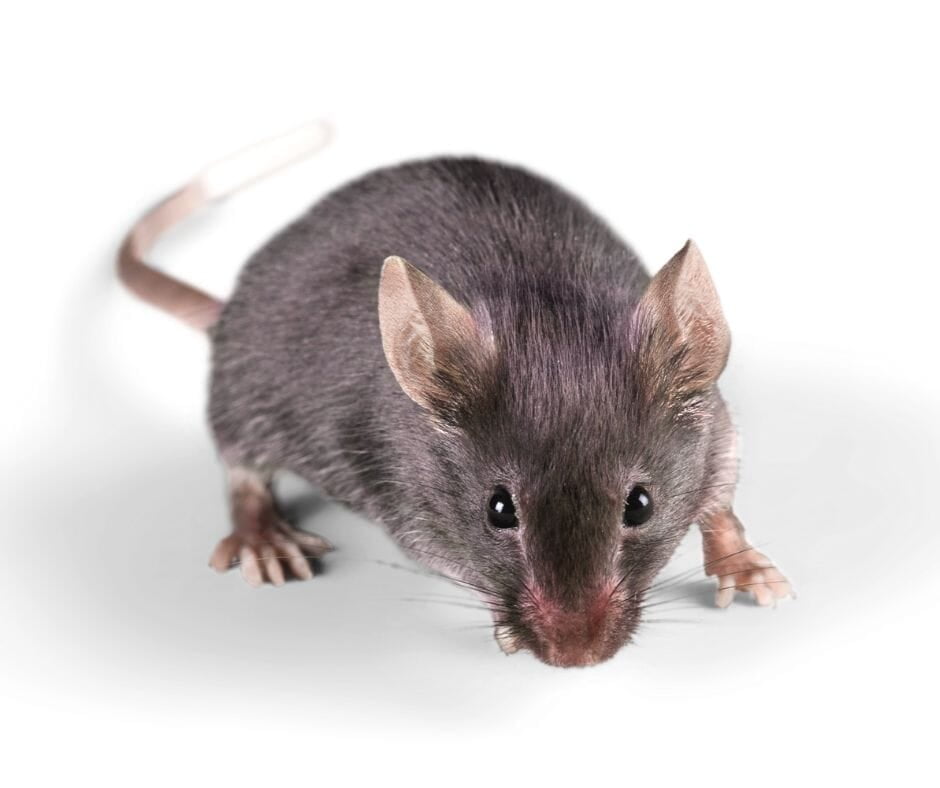
House Mouse
The house mouse is a small mammal of the order Rodentia. It has a pointed snout, large rounded ears, and a long, almost hairless tail. Adult house mice have a body length (nose to base of tail) of 7.5–10 centimeters (3–4 inches) and a tail length of 5–10 cm (2–4 inches). Their weight typically ranges from 11 to 30 grams (0.4 to 1 ounce). In the wild, they vary in color from grey and light brown to black, with individual hairs having an agouti coloration. Domesticated fancy mice and laboratory mice come in various colors, from white to black.
Distribution
House mice are one of the most widespread rodent species in the world. They are found in nearly every country and region, thriving in diverse environments such as urban areas, rural farmlands, and natural habitats. Their ability to adapt to various conditions has made them successful in cohabiting with humans in both temperate and tropical regions. House mice are particularly common in North America, Europe, Asia, and parts of Africa and Australia.
Behavior and Nesting
House mice thrive in a variety of conditions, including homes, commercial structures, open fields, and agricultural lands. They feed on insects (such as beetle larvae and caterpillars), carrion, vegetation, berries, nuts, and seeds. Their voice is a high-pitched squeak. You’ll know if they’re sharing your house with you due to their strong smell. House mice are nocturnal and build their nests in hidden areas close to food sources, using materials such as paper, cloth, and insulation. They are known for their prolific breeding, with females capable of producing multiple litters per year, each containing several offspring.
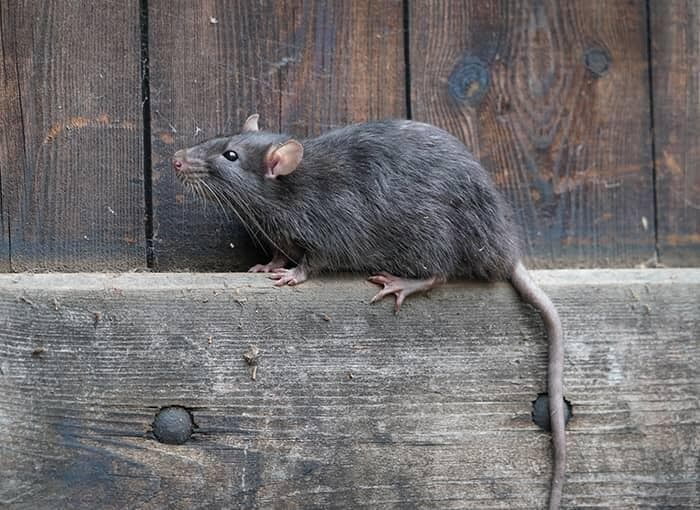
Norway Rats
Norway rats, commonly referred to as street or sewer rats, are believed to be of Asian origin. They arrived in the U.S. on ships from other countries in the 1700s. These rats have bristly brown fur with scattered black hairs. Their underside tends to be lighter, ranging from gray to off-white, sometimes even yellow tones. They have small eyes and ears, and their tails are shorter than the length of their head and body combined.
Distribution
Behavior and Nesting
Norway rats are social pests, often building shelters close to one another. Where there’s one burrow, there are likely others nearby. They burrow in soil near riverbanks, garbage piles, woodpiles, under concrete slabs, and along railroad embankments. These nocturnal rodents enter homes in search of food and water. Once inside, they nest in basements, piles of debris, or undisturbed materials. Their diet is diverse, but they show a preference for meat, fish, and cereal. Dog food is also a favorite menu item for them. Norway rats are known for their destructive behavior, gnawing on wires, wood, and plastic, causing significant damage to properties.
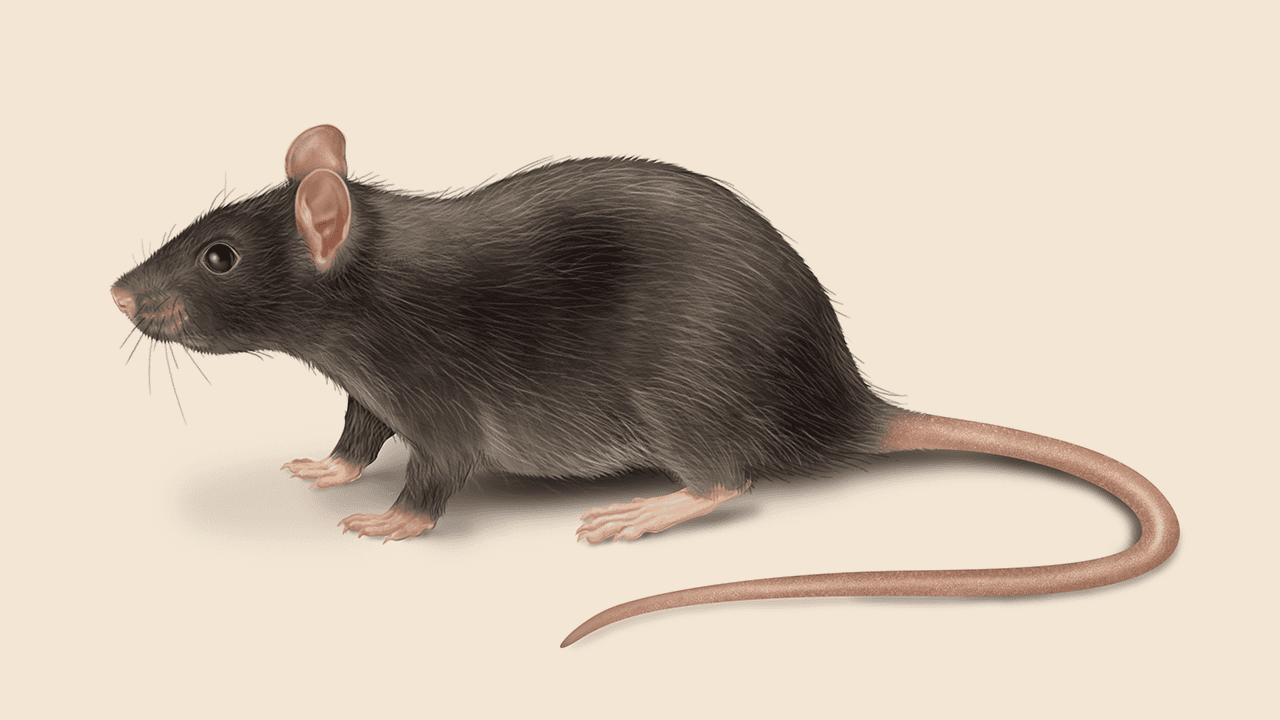
Roof Rats
Roof rats are long and thin rodents with large eyes, pointed noses, and scaly tails. Their fur is typically brown with intermixed spots of black, and their undersides can be white, gray, or black. Adult roof rats measure 6-8 inches (16-20 cm) in total length (including their head and body). Their tails are notably longer than their heads and bodies, measuring 7-10 inches (19-25 cm), making them over 40 cm long. Roof rats weigh 5-9 ounces (150-250 g) on average, but they can grow up to 12 ounces (340 g).
Distribution
Behavior and Nesting
Roof rats are adept climbers and prefer nesting in high areas like attics and roofs. They follow the same paths every night and have a varied diet. Signs of roof rat infestation include gnawed wires, insulation damage, musty odors, and droppings. These nocturnal rodents are known for their agility and can easily access food and water sources by climbing trees, walls, and utility lines. They feed on fruits, vegetables, nuts, seeds, and even small animals. Roof rats are social creatures, often nesting in colonies, which can lead to significant infestations if not controlled.
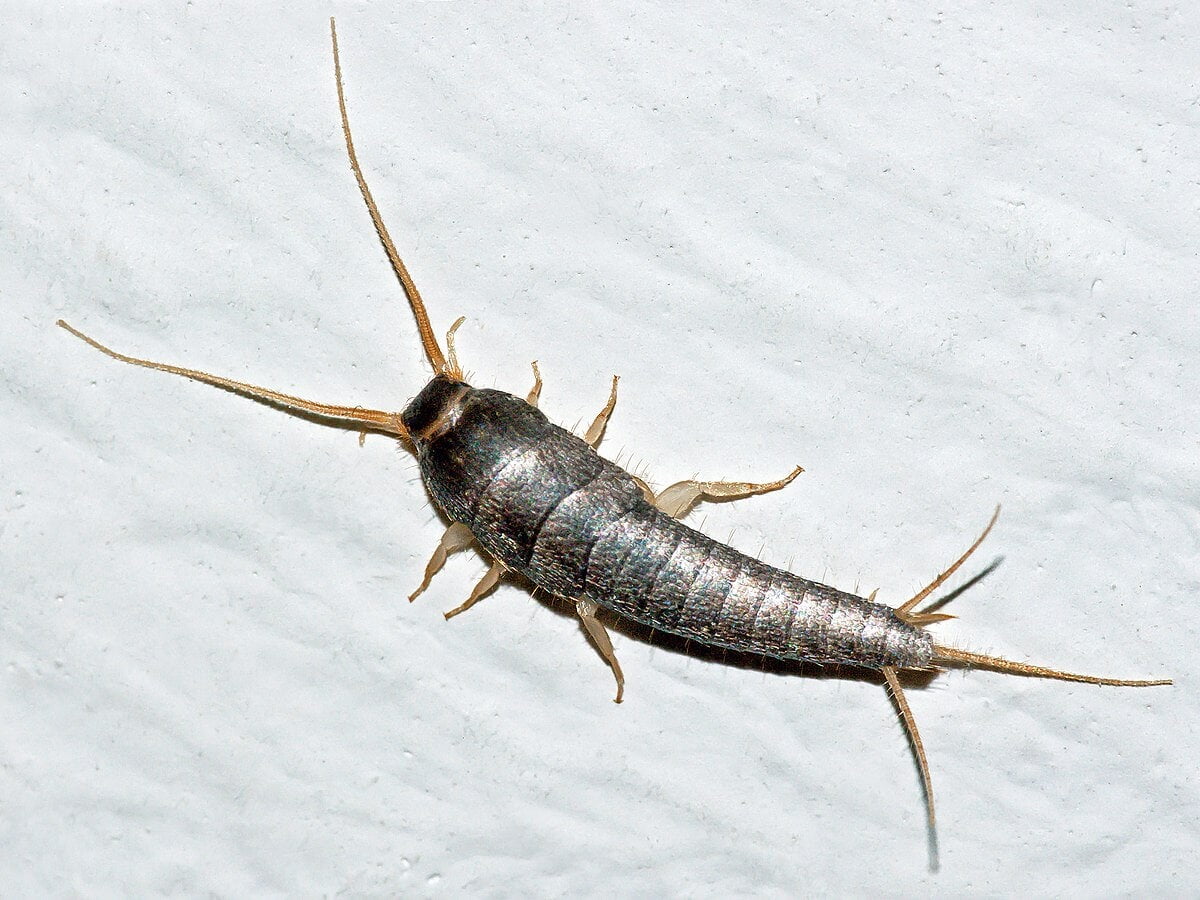
Silverfish
Silverfish have flat, tapered bodies, resembling a fish’s silhouette. They measure about 1/2 inch (12.5 mm) in length or less. Their bodies are covered in overlapping scales, giving them a silver-to-brown color and a shiny appearance. They are wingless and possess threadlike antennae that extend to considerable lengths. Three long, thin, tail-like appendages extend from the end of their abdomens, forming a “T” shape when viewed from above. Their eyes are small and closely set on either side of their heads.
Distribution
Silverfish are found worldwide, thriving in a variety of environments. They are particularly common in regions with high humidity. In the United States, they are prevalent in both coastal and inland areas, often infesting homes, libraries, and commercial buildings. Their ability to adapt to different climates makes them a widespread pest.
Behavior and Nesting
Silverfish prefer cool, damp environments. They hide during the day and come out at night. Common hiding spots include cracks, crevices, and areas with high moisture conditions within homes, such as basements, bathrooms, and kitchens. Silverfish feed on starchy materials, including paper, glue, and textiles, making them a common nuisance in libraries and storage areas. Their nocturnal nature and preference for dark, hidden places can make them difficult to detect.
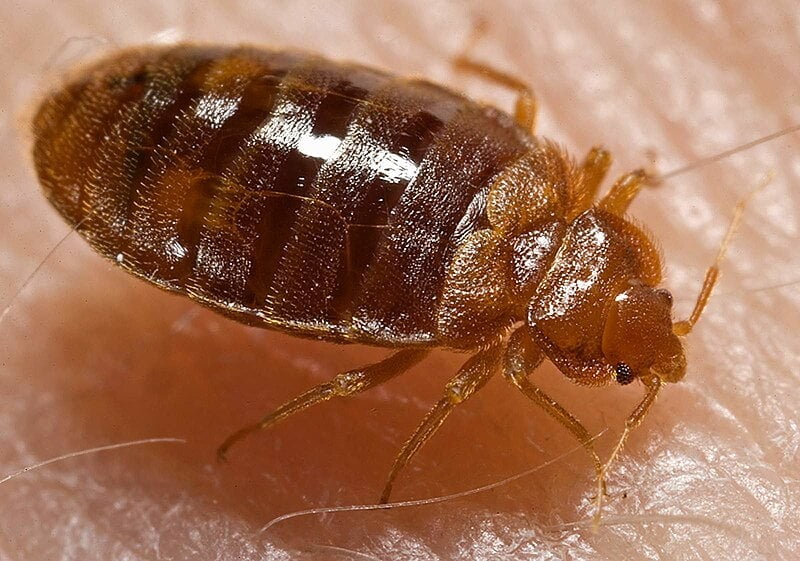
Bed Bugs
Bed bugs have flat, oval-round bodies and six legs. Their color varies from bright red after feeding to dull red if they haven’t fed. Adult bed bugs measure about 1/5" to 1/4" in length, while eggs are minuscule at 1/32". They undergo a lifecycle from egg to nymph to adult, and each stage is visible to the naked eye. Nymphs (baby bed bugs) are straw-yellow. After feeding, their appearance changes significantly.
Skin reactions vary; some people show no skin response, while others experience red bumps, irritation, and rashes. Bed bug bites often appear on exposed skin while sleeping. Early detection is crucial to prevent infestations from spreading.
Distribution
Behavior and Nesting
A female bed bug bites the host for blood upon arrival in the bed. She lays eggs (about 3 per day) in the home, which take 2 weeks to hatch. Nymphs immediately seek food and become adults in about 4 months. Adult bed bugs live for approximately 10 months and can survive without feeding for up to a year. A typical infestation may have 4 to 500 bed bugs.
Bed bugs are nocturnal and hide in cracks, crevices, mattress seams, bed frames, and furniture during the day. They come out at night to feed on the blood of their hosts. Their small size and ability to hide make them difficult to detect. Effective management requires thorough inspection and treatment to eliminate all life stages of bed bugs.
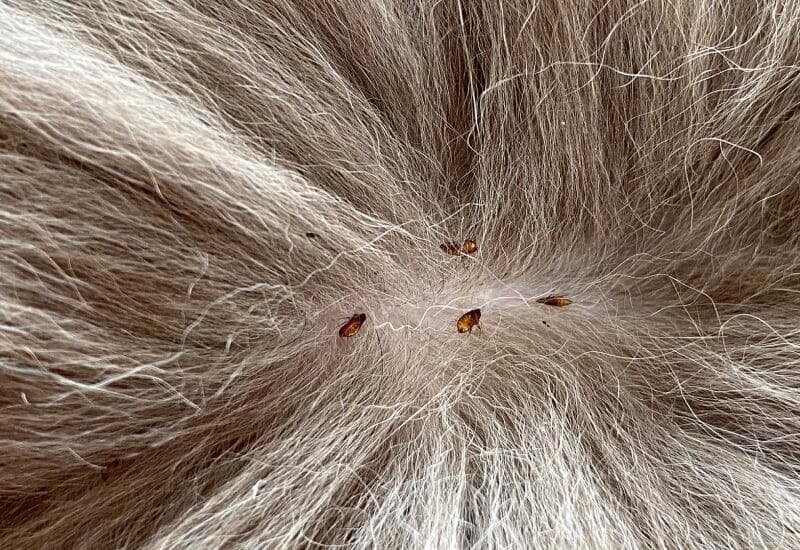
Fleas
Fleas are about 0.1 inches (2.5 mm) in length. Their flat, reddish-brown bodies are covered with hard plates called sclerites, making them tough and resilient. Backward-facing hairs allow fleas to cling to your pet’s fur like Velcro. Their legs are built for jumping, with long hind legs that make them exceptional jumpers relative to their size. Under a microscope, you’d see their specialized mouthparts: barbed stylets for piercing the skin and an epipharynx forming a drinking tube.
Fleas have a pump in their mouth and gut that pulls blood from the host into their bodies. Interestingly, they become more active at night, so checking for fleas in carpets, furniture, and on pets during evening hours is effective.
Distribution
Fleas are found worldwide, thriving in a variety of environments. They are particularly common in regions with warm and humid climates. In the United States, fleas are prevalent in both rural and urban areas, affecting pets and wildlife alike. Their widespread presence is due to their ability to adapt to different hosts and environments.
Behavior and Nesting
Fleas can infest both cats and dogs. Regular grooming and using flea prevention products are essential. Look for tiny, fast-moving insects in your pet’s fur, especially around the neck, tail base, and abdomen. Flea dirt (dark specks resembling pepper) is another sign of infestation. Comb your pet with a fine-toothed flea comb to check for fleas and their eggs.
Fleas lay their eggs on the host, but the eggs often fall off into the environment, where they hatch and develop in carpets, bedding, and furniture. The larvae feed on organic debris and adult flea feces until they pupate and emerge as adults. Fleas are known for their rapid reproduction, making infestations difficult to control without thorough treatment of both the pet and the environment.
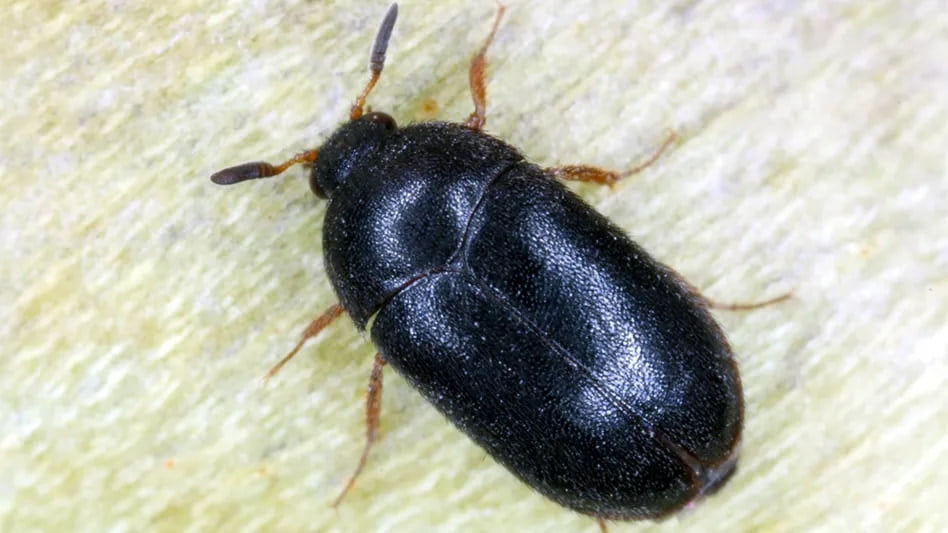
Carpet Beetles
Carpet beetles are small, oval-shaped insects that vary significantly in color and size. The black carpet beetle (Attagenus unicolor) has black bodies with brown legs, and their larvae are particularly problematic, staying in the larval stage for a few months. Larvae are shaped like carrots, with one end narrower. As adults, black carpet beetles come in various colors, such as light brown or dark brown, and have short visible hairs.
Other species of carpet beetles range in size from as small as 2 mm to as large as 1/4 inch. Their colors range from bright white and yellow to all-black. The larvae also vary in color and have short visible hairs.
Distribution
Behavior and Nesting
Carpet beetles feed on animal products like wool, skin, fur, hair, and even dead insects. They share nests with animals or fly indoors to find warmth and feed on natural fiber clothes and textiles. The larvae are especially destructive, as they consume a wide variety of materials containing keratin, which is found in animal products. They hide in dark, undisturbed areas like closets, attics, and under furniture, making infestations difficult to detect until significant damage has occurred. Regular cleaning and proper storage of susceptible items can help prevent infestations.
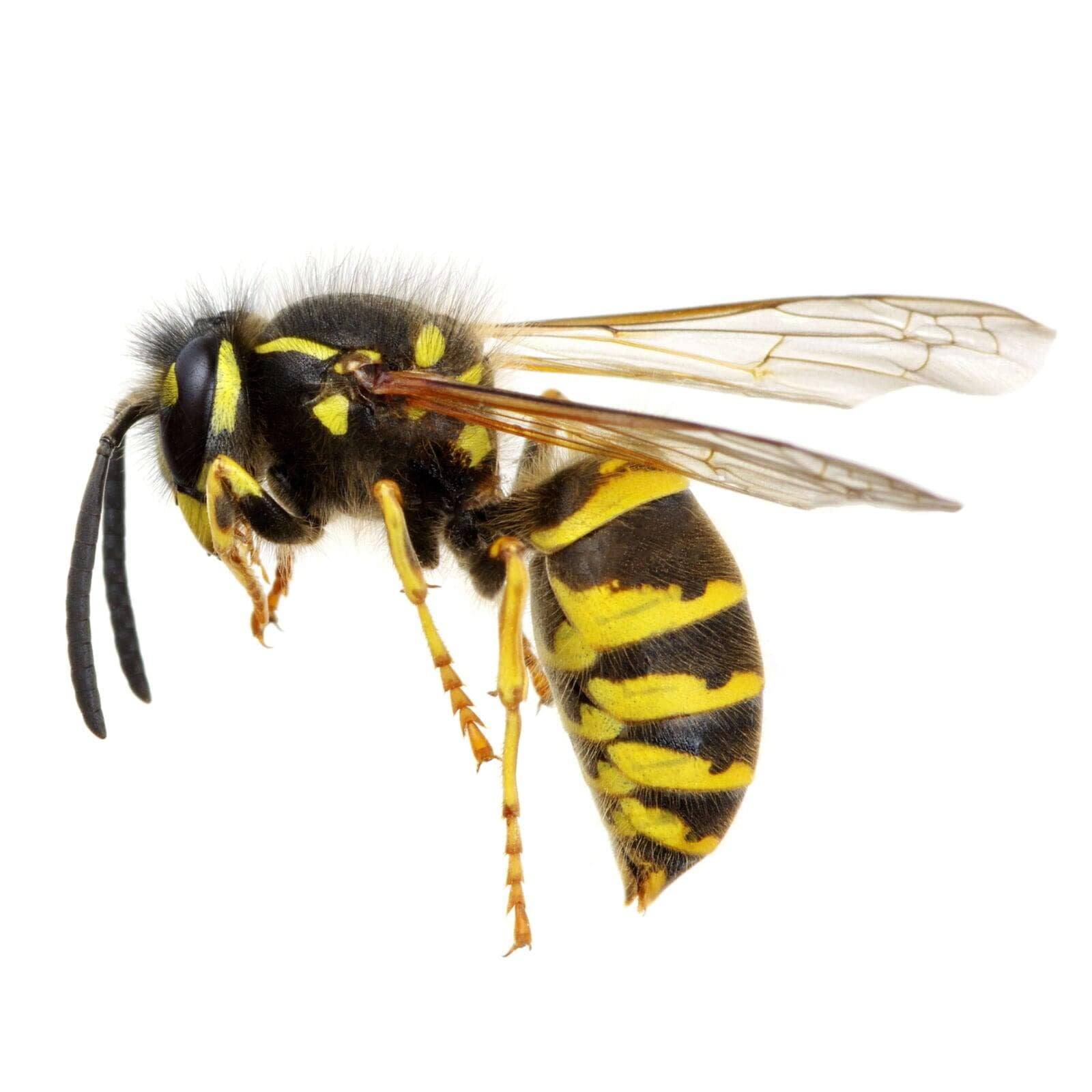
Wasps
Wasps typically have slender, smooth bodies with a distinct thin waist between the thorax and abdomen. Most wasps are yellow and black, but some species may be brown, black, or red. Look for their six spindly legs, which can be black, orange, or yellow. Some wasps have bi-colored legs. Unlike bees, wasps lack a fuzzy body and have a more streamlined appearance.
Distribution
Wasps are found worldwide, thriving in various environments ranging from forests and fields to urban areas. They are particularly common in temperate regions during the warmer months, where they build nests in sheltered locations. In the United States, wasps are prevalent across all states, with specific species like the bald-faced hornet, yellowjackets, and paper wasps being common in many regions.
Behavior and Nesting
Wasps exhibit a range of behaviors depending on the species:
- Bald-faced Hornet (Dolichovespula maculata): This black and white wasp defends its nest aggressively. They build large, football-shaped nests typically found in trees or shrubs. Bald-faced hornets are known for their painful stings and will attack if their nest is disturbed.
- Yellowjackets (Vespula maculifrons): These aggressive wasps are known for their unprovoked stinging behavior. Yellowjackets build their nests in the ground, in wall cavities, or under eaves. They are attracted to food and sugary drinks, often becoming a nuisance at outdoor events.
- Black and Yellow Paper Wasp (Polistinae): Relatively docile and harmless compared to other wasp species, paper wasps build open, umbrella-shaped nests that hang from structures like eaves, branches, and overhangs. They are less aggressive but will defend their nest if threatened.
Wasps are beneficial to the environment as they pollinate plants and control insect populations by feeding on other pests. However, their aggressive nature and painful stings can pose a threat, especially to individuals allergic to their venom. Proper management and removal of nests are crucial to prevent wasp-related problems.
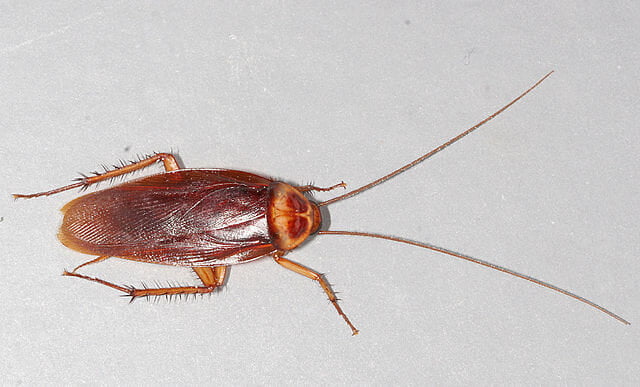
American Cockroach
The American cockroach, also known as Periplaneta americana, is one of the largest cockroach species, measuring around 1.6 inches (4 cm) and can grow up to 2.1 inches (5.3 cm). These roaches have a distinctive red-brown color and are common pests due to their opportunistic feeding habits and potential to transmit diseases.
Distribution
Despite their name, American cockroaches are originally from Africa. They have now spread globally and are commonly found in urban areas, particularly in buildings with ample food and moisture. In the United States, they are prevalent in the South, but can also be found in northern cities with large, warm buildings such as hospitals, food processing plants, and grocery stores. They thrive in tropical and subtropical climates and are a common pest in cities around the world.
Behavior and Nesting
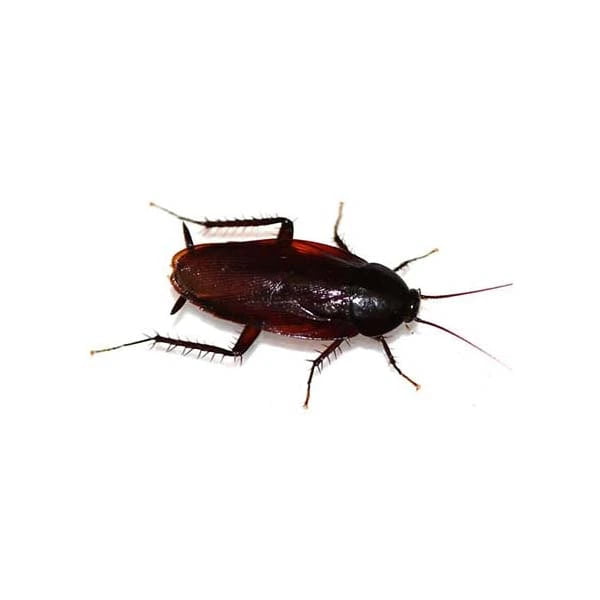
Smoky Brown Cockroach
The Smoky Brown cockroach, or Periplaneta fuliginosa, is a dark brown cockroach species known for its preference for warm climates. Slightly smaller than the American cockroach, adult Smoky Brown cockroaches typically measure about 1.5 inches (3.8 cm) in length. They have a uniform mahogany or dark brown color, with a glossy sheen that distinguishes them from other cockroach species. Their wings are fully developed, covering the length of their abdomen, and they are capable of flying short distances. The nymphs are similar in appearance but smaller and lack fully developed wings.
Distribution
Smoky Brown cockroaches are primarily found in the Southern United States, Australia, and Japan. They thrive in warm, humid environments and are commonly encountered in these regions. In the U.S., they are most prevalent in the Gulf Coast states, from Texas to Florida, and can also be found in some parts of California. Their preference for warm climates limits their distribution in cooler regions.
Behavior and Nesting
These cockroaches are nocturnal and seek moisture indoors, often found in bathrooms, kitchens, and basements. Unlike some other cockroach species, Smoky Brown cockroaches cannot survive cold weather outdoors and will seek shelter indoors during cooler months. They are also capable of flying short distances, which aids in their movement between nesting sites. They prefer to nest in areas with high humidity and access to food and water, making urban environments ideal for their survival.
Smoky Brown cockroaches are opportunistic feeders, consuming a wide variety of organic matter, including decaying plant material, garbage, and pet food. They are known to enter homes through cracks, gaps, and vents, particularly during the night. Their presence can indicate issues with moisture and sanitation, and they can contaminate food and surfaces with pathogens, posing a health risk.

